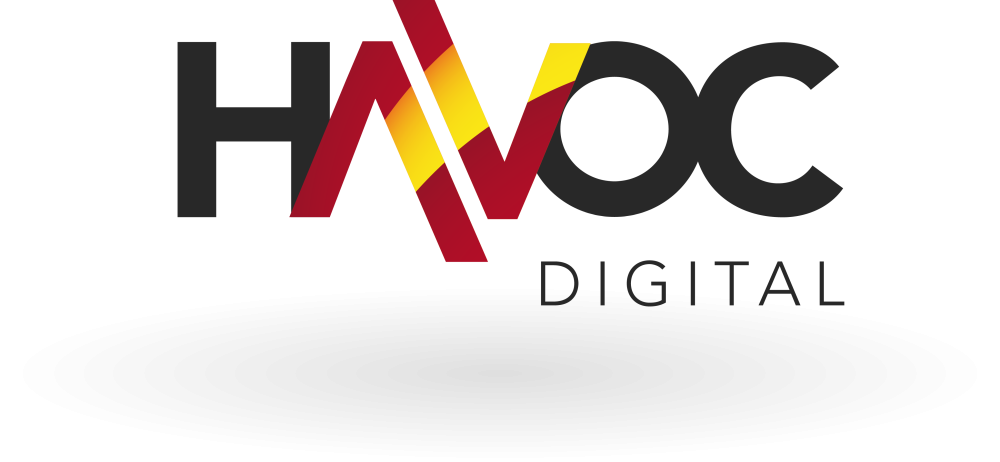The Impact of eLearning on the Company’s Bottom Line
Company’s
Implementing eLearning within a company can yield highly positive outcomes, including enhanced employee productivity, significant return on investment (ROI), and considerable cost savings.
However, adopting eLearning also requires an upfront investment in technology, software, and training for employees to become proficient in eLearning platforms and related technologies.
This need for investment is particularly pronounced for employees who lack computer skills. Moreover, older employees might initially experience a dip in productivity as they adjust to computer-based learning methods, due to the learning curve associated with adopting new technologies.
Despite these challenges, for many companies, the initial investment and temporary decrease in productivity are viewed as worthwhile trade-offs. Over the long term, the benefits of eLearning—such as improved efficiency, cost savings, and the potential for a substantial ROI—often outweigh the initial costs and adjustment period, making it a strategic investment in the company’s future.
1. Introduction – eLearning
In the current challenging economic climate, post-COVID, and high cost of living, organisations are increasingly turning to eLearning as a cost-effective alternative to traditional classroom-based training seminars in their efforts to reduce expenses.
Many organisations are discovering that despite the higher initial setup costs associated with eLearning platforms, the overall expenditure on training can be significantly reduced, thereby positively impacting their financial performance.
A key advantage of eLearning is its potential to achieve substantial cost savings for an organisation. By shifting training to an online format, the expenses related to hiring instructors, securing physical venues, and producing printed learning materials are virtually eliminated.
The cost difference is not negligible. It’s estimated that traditional classroom training costs an average of $1,000 per participant, while eLearning can reduce this cost to around $100 per participant.
Furthermore, eLearning offers the flexibility to provide a wider range of learning opportunities, tailored to individual learning styles and needs, which is often not feasible in a conventional classroom setting.
1.1 Benefits of Elearning
The enhancement in eLearning quality has notably boosted company performance, making it more agile in meeting customer demands.
Employees have reported that access to eLearning resources is a key factor in their decision to remain with the company. Moreover, investment in professional development through eLearning has been linked to a 3% increase in employee productivity*.
Research further supports the value of eLearning, indicating that for every dollar spent on eLearning, companies can see a return of approximately thirty dollars in productivity gains*.
E-learning’s accessibility, even in remote locations, levels the playing field for companies that lack extensive resources, allowing them to offer comprehensive training to their employees regardless of their geographical location.
Additionally, eLearning requires 40% to 60% less time* from employees compared to traditional off-campus training methods, making it a more efficient approach to professional development.
*The statistics and claims made are illustrative and based on general trends observed in the field of eLearning and its impact on organisational performance. They are not directly sourced from specific studies or publications.
1.2 Challenges of Implementing Elearning
One common obstacle in eLearning is keeping employees engaged, particularly with extensive or less engaging material.
Another significant challenge is the sense of isolation that can arise from distance learning. The collaborative aspect of learning, where individuals can share and digest information together, is often lost in virtual environments. This issue can be exacerbated by technology, which, despite its intent to connect, can sometimes create a perceived barrier among employees.
Additionally, the management of eLearning systems presents its own set of challenges. After the initial setup of a technical system, management teams may find themselves uncertain about the next steps to take to ensure effective learning and engagement.
Employee-related challenges also emerge, ranging from language barriers and the learning curve associated with new software to broader concerns about the efficacy of content delivery methods.
Addressing these challenges requires thoughtful strategies to foster engagement, promote community among remote learners, and ensure both management and employees are equipped to navigate and benefit from eLearning platforms effectively.

2. Cost Savings
The most noticeable impact of eLearning on a company’s financial performance is the significant cost savings it offers compared to traditional employee training methods.
Traditional learning and development approaches are often criticised for their inefficiency, with estimates suggesting that up to 50% of the time, materials, and resources dedicated to employee training may be wasted.
This inefficiency can stem from various factors, such as covering material that trainees already know or including irrelevant content.
In contrast, eLearning represents a departure from these traditional methods by allowing for the content to be broken down into the smallest possible learning units.
This modular approach facilitates the creation of structured learning programs that are directly aligned with specific learning outcomes and competencies required by employees. This targeted and efficient delivery method not only reduces waste but also enhances the effectiveness of the training.
2.1 Decreased Travel Costs
Travel expenses constitute a major financial burden for companies required to gather employees at a single location for training sessions. Transitioning from traditional in-person training to an electronic, or eLearning, format enables companies to achieve substantial savings on travel costs.
This advantage is not limited to multinational corporations alone. Even local businesses aiming to spare their employees the inconvenience and expense of commuting across town for brief meetings can benefit significantly from eLearning.
The savings in time and travel expenses can quickly accumulate, leading to a more efficient allocation of resources.
eLearning proves particularly beneficial for companies with a geographically dispersed workforce. It eliminates the logistical challenges and costs associated with bringing employees together from various locations, offering a flexible and accessible learning solution. This approach not only reduces direct travel costs but also minimises downtime, as employees can engage in training without leaving their work environments.
Moreover, eLearning platforms can offer tailored and on-demand content, allowing employees to access training materials at their convenience. This flexibility enhances learning outcomes and employee satisfaction, further contributing to the organization’s overall efficiency and productivity.
In this way, eLearning not only cuts costs but also supports a more dynamic and adaptable workforce, aligned with the company’s strategic goals and operational needs.
2.3 Minimised Downtime
During traditional training sessions, work often grinds to a halt, especially when the employees being trained are integral to daily operations distinct from those covered in the training. For instance, if a finance team of 10 people participates in e-learning sessions, their regular tasks must be paused for the duration of the training.
However, e-learning introduces a flexible alternative, allowing each employee to schedule training sessions at their convenience, without leaving their work environment. This flexibility means training can be undertaken from an office desk, home, or even a coffee shop.
Thanks to the modular design of e-learning courses, employees can complete small sections of the training as their schedule permits. This approach minimizes disruption to their primary duties while enabling them to stay abreast of the latest trends and developments in their field.
Consequently, e-learning not only facilitates continuous professional development but also ensures that work continues uninterrupted, striking a balance between learning and productivity.
3. Increased Productivity
A more specialised workforce is a more productive one.
eLearning encourages and facilitates the continuous acquisition of knowledge and skill.
Both are essential to sustained productivity and organisational growth in an environment of rapid change, evolving technologies, and operational procedures.
Regularly structured and relevantly timed instruction, updates through added online resources or course modifications help to keep the regression curve of a trained workforce in check.
This becomes a matter of overall business strategy and company vision.
3.1 Faster Onboarding Process
Investing in e-learning platforms can significantly streamline the onboarding process, offering a more efficient alternative to traditional training methods that often involve extensive time and financial commitments. Traditional training can be expensive due to travel expenses, facilitator fees, and the costs of employing training staff.
Moreover, when training requires multiple individuals, e-learning can substantially increase resource availability and enable new employees to transition into their roles more swiftly.
By reducing the costs associated with conventional training methods, funds can be redirected to other areas of the business, enhancing overall operational efficiency.
E-learning investments have proven to effectively accelerate the HR onboarding process. This not only reduces the time required for training from both the employer’s and the new employee’s perspective but also allows the newcomer to quickly reach full productivity and integrate into the company culture.
3.2 Continuous Learning Opportunities
One of the significant challenges businesses encounter in fostering a culture of lifelong learning is striking the right balance between giving employees autonomy in their learning journeys and aligning these efforts with the company’s strategic objectives.
Our own experience, at Havoc Digital, revealed that merely allowing employees to pursue any learning topic of their choice does not optimally leverage learning as a strategic resource for the organisation.
However, it was consistently observed across the organisation that empowering employees to direct their own learning initiatives was the most effective strategy for maximising the benefits of learning.
Our training model outlines a framework that defines the limits within which employees can navigate their learning paths independently.
Central to this model is the introduction of customised online learning “maps” for each employee. These maps guide employees by detailing available learning opportunities, illustrating how each opportunity aligns with their personal goals, and indicating the qualifications or certifications that can be achieved.
3.3 Improved Employee Performance
Another significant impact was seen on employee performance.
Better learning opportunities offer better-trained and equipped employees who show continuous improvement in their job roles.
These employees are faster at decision making, reaction time, and problem solving therefore saving company time which directly shows valuable contribution to the bottom line.
Research conducted also proved the same. It suggested that eLearning cuts instruction time by up to 60%.
Productivity improvements are immediately seen after training, showing that eLearning is highly effective in improving employee skills, productivity, revenue, and the bottom line of any organisation.

4. Enhanced Employee Engagement
eTraining programs present a valuable opportunity for enhancing the professional development landscape for both employers and employees.
For employees, eTraining provides a flexible and accessible means to acquire job-related skills and knowledge, allowing them to learn at their own pace and on their own schedule.
This flexibility is particularly beneficial in today’s fast-paced work environment, where balancing work, learning, and personal life can be challenging.
For employers, eTraining offers the advantage of standardising training content, ensuring that all employees receive the same high-quality instruction regardless of their location or schedule.
This uniformity is crucial for maintaining consistent standards across the organisation and for efficiently scaling training efforts as the company grows.
4.1 Interactive Learning Experiences
eLearning platforms often feature interactive elements such as videos, quizzes, and simulations.
These interactive components make learning more engaging and memorable, helping employees to better retain information and apply what they have learned in their roles.
4.2 Personalised Training Programs
eLearning allows for the customisation of learning paths to meet the unique needs and goals of each employee.
Personalised programs can address individual skill gaps and career aspirations, thereby increasing motivation and engagement in the learning process.
4.3 Gamification and Rewards
Incorporating game-like elements and rewards into eLearning can significantly boost engagement levels.
This theme is becoming the most popular because of the trend established by educational games worldwide. Among adults, this kind of learning experience has demonstrated that games succeed in promoting healthy competition (Team Building Games) between employees.
Leaderboards, badges, and certificates of completion add a competitive edge and sense of achievement to the learning experience. These elements motivate learners to progress through courses and achieve higher levels of mastery.
The collective enterprise identity then, will lead to better employee engagement and ultimately better results for the company.
In conclusion, the adoption of eLearning within our business framework represented a transformative approach to professional development and knowledge acquisition. By integrating eLearning into our corporate culture, we not only streamlined the learning process but also fostered a collective enterprise identity that is pivotal for enhancing employee engagement. This, in turn, translates into superior performance and outcomes for the business.
The value proposition of eLearning is clear: it offers a cost-effective, flexible, and efficient method of delivering training that aligns with the diverse needs and schedules of our diversified, and geographically remote workforce. By enabling employees to learn at their own pace and in environments that suit them best, we are not just investing in their professional growth but also the overall resilience and adaptability of our organisation.
Moreover, eLearning empowers us to rapidly disseminate critical information and skills across the organisation, ensuring that our workforce remains at the cutting edge of industry developments (Google, SEMrush, Advertising, Social i.e TikTok + the next best thing, and Content Marketing) and best practices. This capability is invaluable in today’s fast-paced and ever-evolving business landscape, where staying ahead of the curve is not just an advantage but a necessity.
Ultimately, the implementation of eLearning is a strategic investment in our company’s future. It signifies our commitment to nurturing a knowledgeable, skilled, and highly motivated workforce capable of driving innovation and excellence.
As we embrace eLearning, we are not just enhancing our operational efficiency; we are laying the foundation for sustained growth, competitiveness, and success in the global marketplace.
The journey towards a more engaged, informed, and productive workforce begins with eLearning, and the benefits it promises are both substantial and far-reaching.
Ben Miranda
Havoc Digital
References:
What’s The Real Cost Of Training New Employees?
Stop Wasting Time And Money Training Employees
“Design for How People Learn” by Julie Dirksen – Insights into the fundamentals of creating effective learning experiences, with a focus on understanding how people learn.
“Drive: The Surprising Truth About What Motivates Us” by Daniel H. Pink – Explores motivation and how autonomy, mastery, and purpose can significantly enhance employee engagement and performance.
“The Gamification of Learning and Instruction: Game-based Methods and Strategies for Training and Education” by Karl M. Kapp – The work delves into the application of gamification in educational settings, providing a comprehensive overview of how game elements can be used to enhance learning.
“E-Learning and the Science of Instruction: Proven Guidelines for Consumers and Designers of Multimedia Learning” by Ruth Colvin Clark and Richard E. Mayer – This book offers evidence-based strategies for designing effective multimedia learning experiences.







